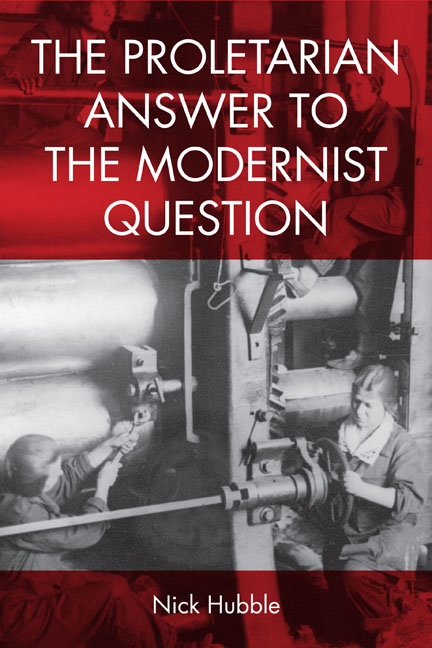Book contents
- Frontmatter
- Contents
- Acknowledgements
- Introduction
- 1 ‘Her Heritage Was that Tragic Optimism’: Edwardian Pastoral
- 2 ‘The Common Life’: Women and Men after the General Strike
- 3 ‘She Had Finished with Men Forever’: Lewis Grassic Gibbon's Grey Granite
- 4 ‘The Raw Material of History’: John Sommerfield's May Day
- 5 ‘None of That “My Good Woman” Stuff’: Outsider Observations
- Conclusion
- Bibliography
- Index
4 - ‘The Raw Material of History’: John Sommerfield's May Day
Published online by Cambridge University Press: 23 June 2018
- Frontmatter
- Contents
- Acknowledgements
- Introduction
- 1 ‘Her Heritage Was that Tragic Optimism’: Edwardian Pastoral
- 2 ‘The Common Life’: Women and Men after the General Strike
- 3 ‘She Had Finished with Men Forever’: Lewis Grassic Gibbon's Grey Granite
- 4 ‘The Raw Material of History’: John Sommerfield's May Day
- 5 ‘None of That “My Good Woman” Stuff’: Outsider Observations
- Conclusion
- Bibliography
- Index
Summary
The everyday consciousness that things could be different
John Sommerfield's May Day (1936) may be considered as the culmination of the trend of proletarian literature, by writers such as Gibbon, Greenwood, Lawrence, Mitchison and Wilkinson, considered so far in this book. One of the key contexts remains the General Strike of 1926 and the central concern is as much with gender relations as those of class. Unlike those other writers, Sommerfield was a communist who went on to fight in the Spanish Civil War. Furthermore, May Day includes relatively extensive scenes set in the factory workplace it is centred around; in contrast, we merely learn in The First Lady Chatterley that Parkin is working in a Steel Mill, we never see inside the factory gates in Grey Granite, and although we hear about Harry Hardcastle's joy at becoming a lathe operator, little action is set inside the factory in Love on the Dole. In this respect, the depiction of active class struggle in May Day represents an intensification of the conflict that features in these earlier novels. However, as Stuart Laing notes, the fates of the two Seton brothers in May Day parallel those of Greenwood's and Gibbon's characters:
In the May Day march which forms the climax of the novel one brother (like Larry in Love on the Dole) dies after being struck by a policeman, while the other (like Ewan in Grey Granite) simultaneously takes a leading part and finds his uncertain political commitment becoming firm. (Laing 1980: 147)
While the focus on the significance of May Day itself as a temporal rallying point for the dream of the classless society to come is also a feature of Mitchison's We Have Been Warned (see Mitchison 2012: 172–87), May Day is actually a transitional novel marking the point at which the proletarian literature of the decade following the General Strike switches from dealing with the aftermath of defeat to encompassing the rapid social change of the 1930s and anticipating the politics and representational forms of the Popular Front, which would dominate the second half of the decade.
The action of May Day, as a prefatory note to the novel informs us, ‘takes place between the morning of April the twenty-ninth and the early afternoon of May the first a few years hence’ (Sommerfield 1936: ix).
- Type
- Chapter
- Information
- The Proletarian Answer to the Modernist Question , pp. 141 - 164Publisher: Edinburgh University PressPrint publication year: 2017

